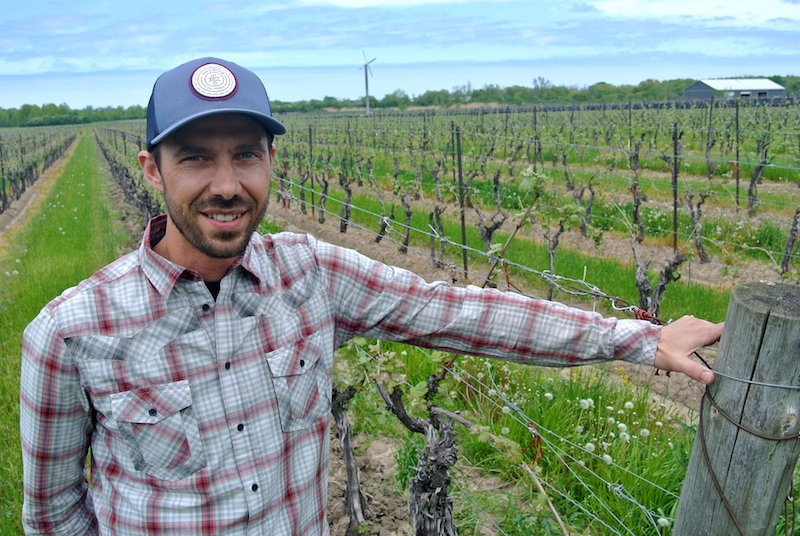
By Rick VanSickle
By August of last year the Lowrey family had run out of its fastest selling Niagara wine, the Five Rows Craft Wine Sauvignon Blanc.
This year their cult-like savvy didn’t even make it to the May 2-4 weekend; it was all sold out in 24 hours — and that was with a four-bottle limit per family.
“It’s problematic, because people expect to buy it, but it’s all gone. It does present its share of heartbreak,” Wes Lowrey tells me.
It’s the kind of problem most wineries in Niagara would love to have.
The tiny-production Five Rows Craft Wine is the closest Niagara comes to a “cult” winery, a hackneyed term that means a winery has something that people want but they just can’t get it. In fact, the entire production, granted tiny by most standards at under 1,000 cases, will be toast by July, if not before. All the Pinot Noir, Pinot Gris, Riesling, Cabernet Sauvignon, Syrah and Sauvignon Blanc will have left the building.
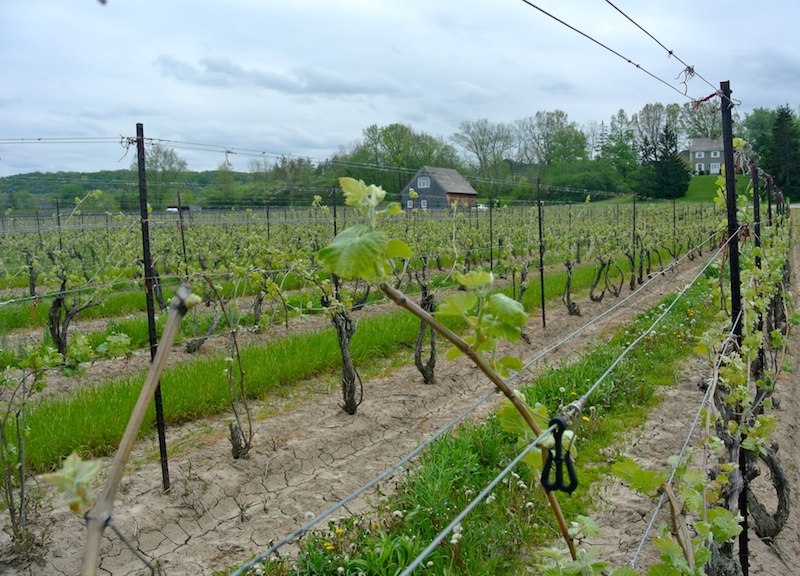
Oddly, the last wine to disappear is usually the Pinot Noir, produced from some of the oldest and finest Pinot (Clone 115) plantings in Ontario — the original Five Rows planted in the early 80s — and coveted by the few lucky wineries deemed worthy of purchasing what’s left of the fruit once Wes Lowrey has claimed his bounty.
Because the Lowreys (Wes, his dad Howard and mom Wilma) are primarily grape growers, they struggle with the success of the portfolio they craft every year.
It was Wes, a graduate of the oenology and viticulture at program at Brock University, who in 2007 convinced his dad Howard to produce wines from the estate’s fruit as a sideline to grape growing. The idea was to bottle a limited 800-case portfolio of wines, sell it out of the small barn on the property that acts as the winery and retail facility and keep it open (weekends only, or by appointment) until the wines sold out. That window has become shorter and shorter every year while the case production and prices have remained pretty much the same.
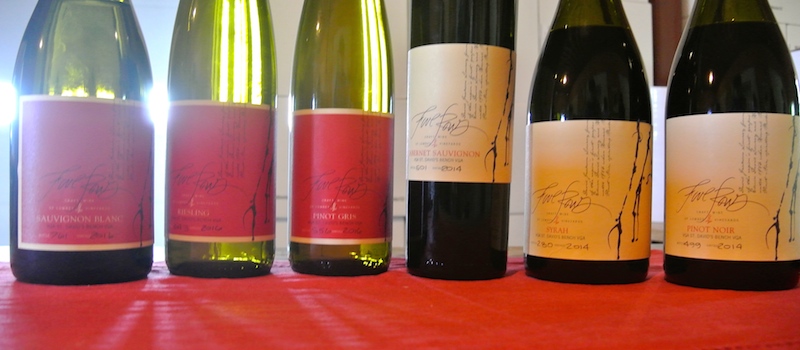
“I just wanted to make a bit of wine on the side and run the vineyard,” Wes tells me. “Then it morphed into this little cult thing. I don’t want to mess with that vibe, because it works.”
Success on the wine side, however, has caused Wes plenty of soul-searching; how could it not? He simply can’t make enough Sauvignon Blanc or any varietal, for that matter, and it’s gone faster than any other portfolio in Niagara.
The question always grinds his gears: “Are we successful because we make a small amount and people clamour for our product? Or are we stupid and should we expand? It sounds appealing to me,” he says, but, there’s always that but that gets in the way.
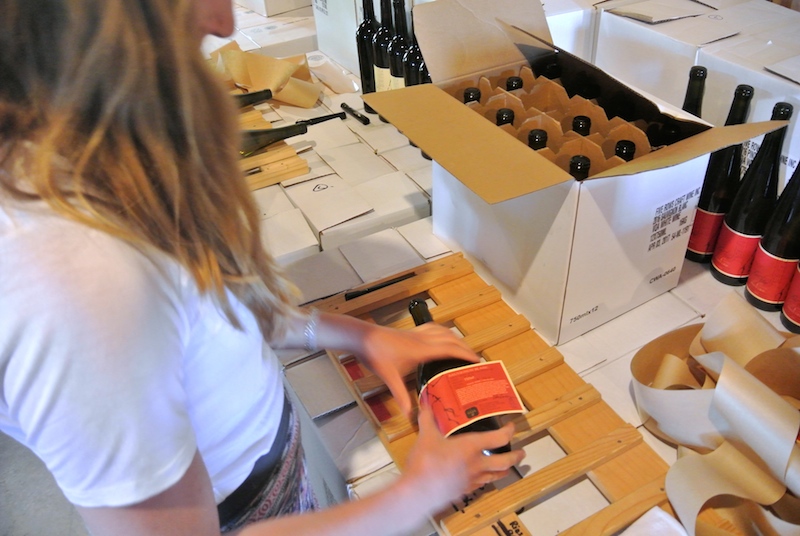
The things that make the operation successful — small lots, attention to detail, hand-crafted, hand labeled and numbered bottles, even the hand writing on each and every bottle penned lovingly by Wilma — all make up the essence and soul of the Five Rows wine experience. And, perhaps more than anything, “it’s the relationships we have with people” … no one wants to mess with that.
Located in the St. Davids Bench sub-appellation, the 5th generation Lowrey property is a 35-acre vineyard that was originally farmed for everything from cherries, plums and pears to labrusca grapes.
It was only with the current generations that vinifera was planted in the lower part of property they purchased from Howard’s dad in the early 80s. It was Karl Kaiser, co-founder of Inniskillin, who convinced the farming family to ditch the labrusca and turn to the emerging trend of vinifera (noble) varieties.
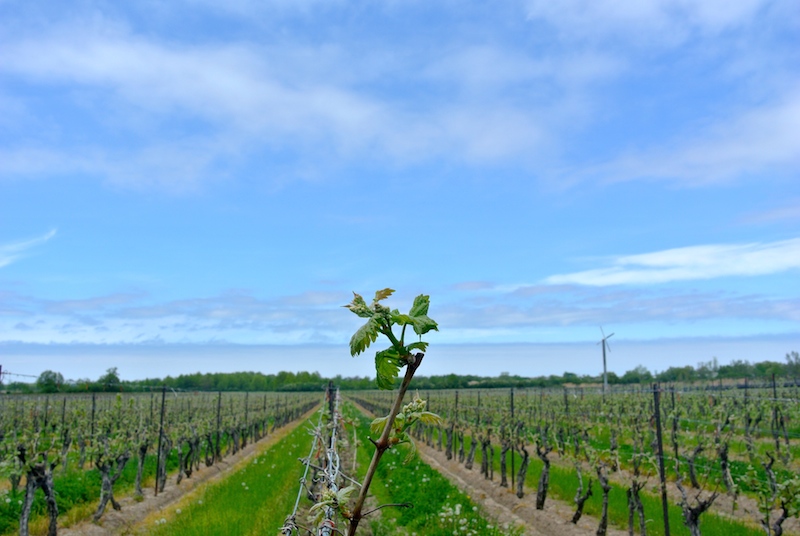
The first grapes planted were the original “Five Rows” of Pinot Noir Clone 115, made famous in 1993 by the Alliance project, the first joint venture between Canada and France with Inniskillin and Jaffelin of Cote D’Or, Burgundy. Winemakers Kaiser and Bernard Repolt collaborated from 1993 to 2007 on these VQA wines, which caused a stir back in the day for their quality, closely aligned to Burgundian Pinot and Chardonnay, and had a dedicated following.
Inniskillin purchased the Lowrey fruit until 1999, then Niagara’s Creekside Estate Winery came knocking and took everything the Lowreys could grow, even convincing the family to plant Pinot Gris, Sauvignon Blanc and Syrah.
Creekside was going through some changes, and in 2007, decided to abandon Pinot Noir, leaving the door open for Thomas Bachelder, who was just starting up his tri-country wine project; Ilya Senchuk, who was the winemaker at Foreign Affair but had embarked on a virtual wine project, Leaning Post (now a full-fledged winery in Winona); Richie Roberts, the winemaker at Fielding Estate, and, more recently, the new Adamo Estate Winery in the Hockley Valley, who somehow sweet-talked the Lowreys (word is Mario Adamo paid a visit to Lowrey’s tasting room a few years ago and was so smitten with the Pinot that he convinced Wilma on the spot to sell Lowrey Pinot to Adamo).
Wes takes three rows of the original five for his Pinot from 33-year-old vines while the other two rows, plus an additional two rows of 25-year-old vines and two more of 20-year-old Pinot and some newer Pinot plantings are divided between the four recipients.
It is one of the most unique opportunities in Niagara to see how Lowrey and other winemakers treat the fruit.
“History has shown there are differences not only in the appellation but also in each vineyard, even over our 35 acres,” Wes told me for a previously-published magazine story I did on the vineyard. “How could you not think there’s something to be explored there? Old family farms, old blocks will show such varietal characteristics that we have to explore them.”
Here’s what I liked from Lowrey’s new releases (if any of these wines appeal to you, get them now, don’t wait, because you will be gone soon).
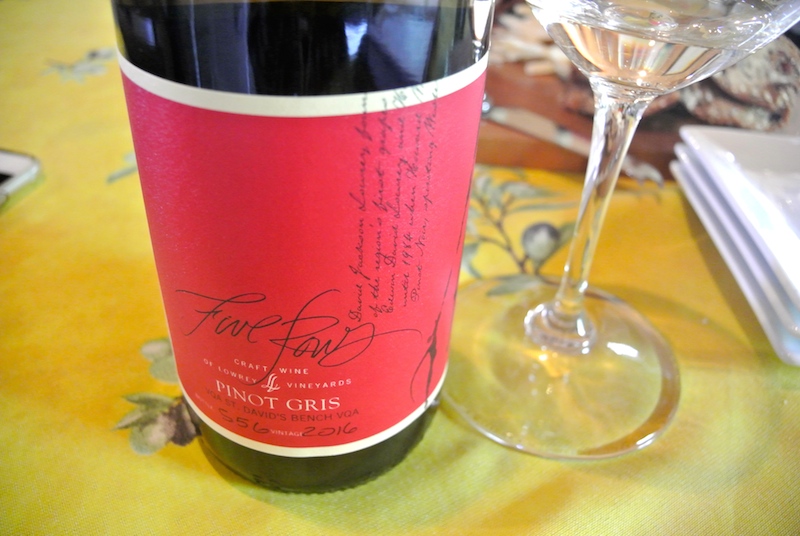
Five Rows Craft Wine Pinot Gris 2016 ($35, 91 points) — The 2016 vintage was tough on growers because of the extreme heat and what that does to white varietals such as Pinot Gris. The canopy simply stopped growing at some point and the issue became maintaining acidity while not over-ripening the fruit. It was the first time the Lowreys used their over-head irrigation system since the hot 2007 vintage. The result is this opulent, ripe and highly aromatic Gris with a nose of peach cobbler, baked apple pie, apricot, honey and melon. It has beautiful texture in the mouth with rich, ripe flavours of peach, tropical fruits and decent acidity holding it all together.
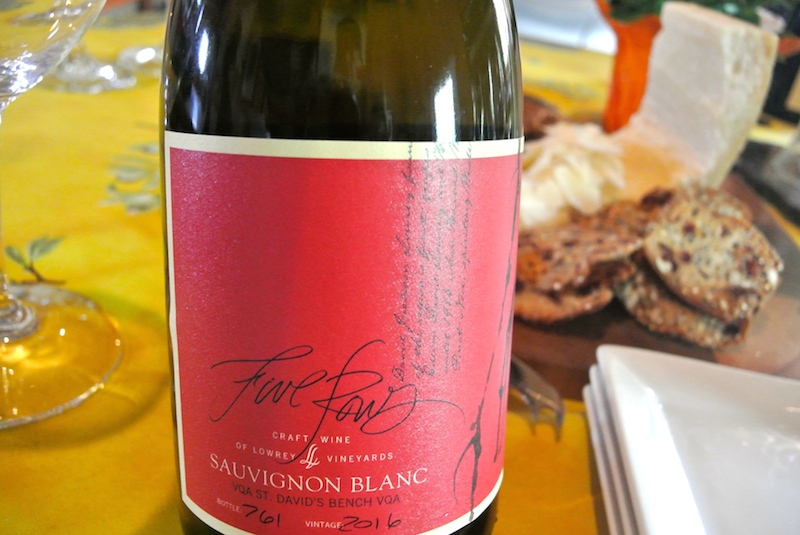
Five Rows Craft Wine Sauvignon Blanc 2016 ($35, 93 points) — Why even bother? Those who know about this wine deplete the supply before I can even write a review (not that anything I write will change its destiny). It’s simply a gorgeous wine, made in a style that is the complete opposite of racy, zippy and lean New Zealand savvy and projects more toward Bordeaux with barrel aging in older French oak barrels giving the wine complexity and depth. A few Niagara wineries are making this style of Sauvignon Blanc: Stratus, Trius, Vineland Estate (Elevation), Ravine, Hidden Bench (Nuit Blanche) and Creekside, to name a few, all to great success. This one, in the heat of 2016, is a beauty. A nose of tropical fruit, grapefruit, subtle herbs and a complex array of fine, elegant spice notes. It’s creamy and complex on the palate with ripe grapefruit, tropical fruits and spices that maintain balance from the natural acidity Lowrey’s vineyard achieved in spite of the heat.
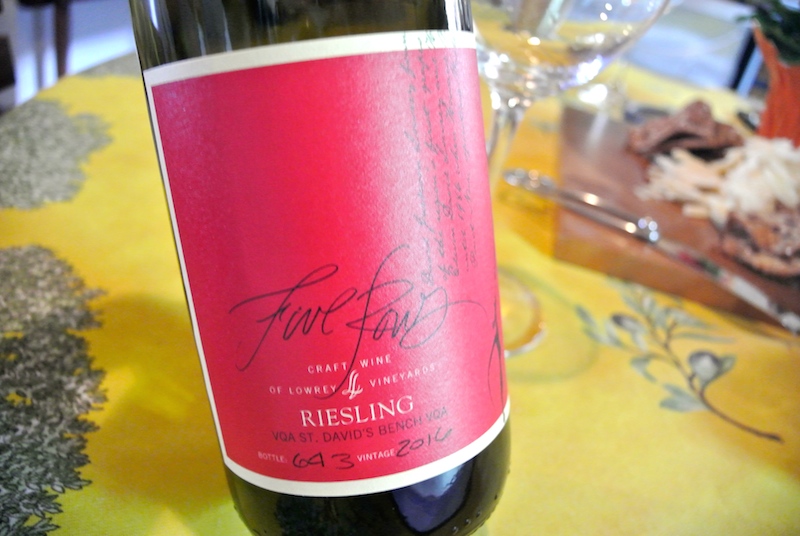
Five Rows Craft Wine “Jean’s Block” Riesling 2016 ($35, 90 points) — Lowrey only uses the Alsatian Clone 49 for his Riesling; it’s the only clone grown at the estate. The nose is rife with tropical, floral, peach and apple aromas. It has a playful tug of sweet and tart fruit on the palate with a range of citrus and tropical fruits and balancing acidity to hide the 17 g/l of residual sugar.
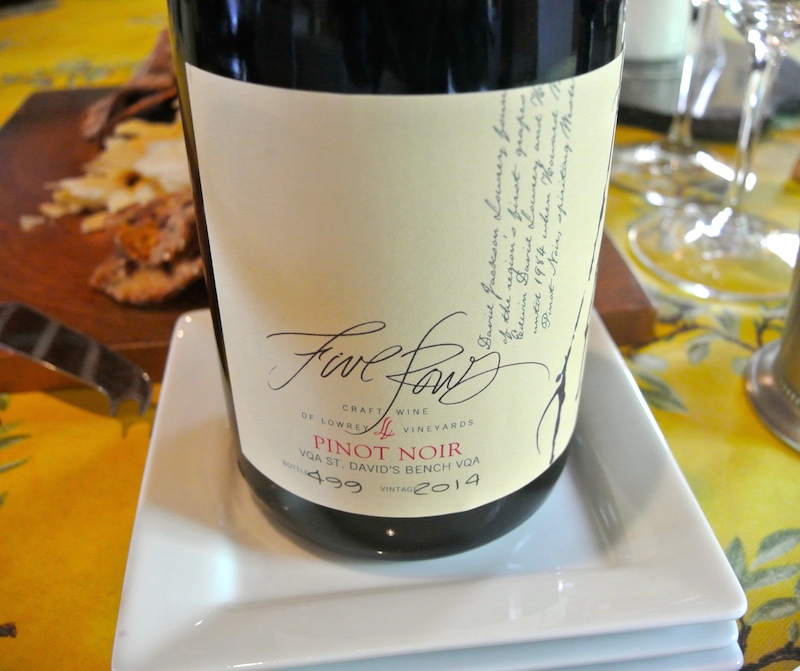
Five Rows Craft Wine Pinot Noir 2014 ($55, 92 points) — For Lowrey’s version of his portion of the original five rows of 33-year-old Pinot Noir, he puts the wine in French oak for two years, only 20% new oak. The 2014 vintage wasn’t kind to red varietals, but Pinot was less affected than the Bordeauxs. It was late ripening and tough decisions, including aggressive thinning, had to be made on the fly. It shows a lighter red colour in the glass with aromas of brambly raspberry, violets, earth, beetroot, savoury cherry, mushrooms and elegant spice notes. It’s tight at this stage but forgiving, with medium tannic structure, brambly red fruits, mineral notes, complexity and length through the finish. Might want to cellar a couple of years and save at least one to compare to what Thomas Bachelder, Richie Roberts at Fielding Estate, Ilya Senchuk at Leaning Post and Shauna White at Adamo do with the same fruit. Lowrey himself loves tasting what these winemakers do with the Lowrey Pinot Noir. “As a grape grower, to know your fruit is going to people as passionate about it as you are is the rewarding thing,” he says.
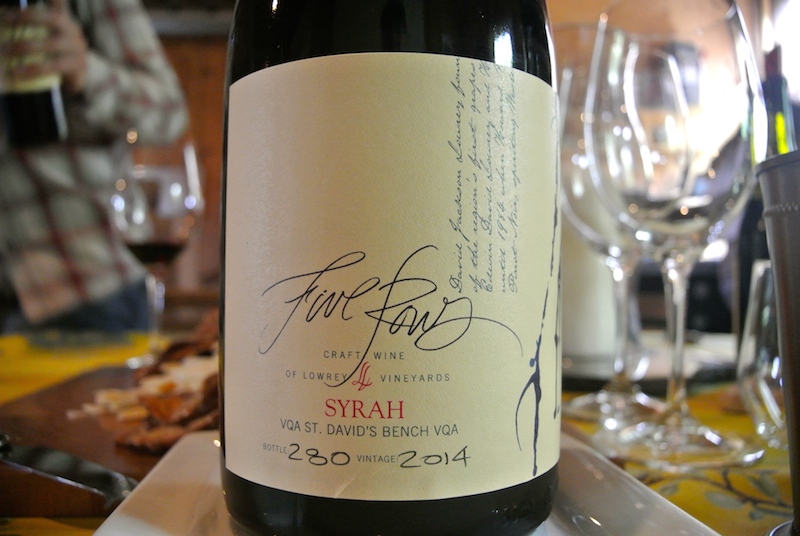
Five Rows Craft Wine Syrah 2014 ($55, 89 points) — Lowrey says his vineyard has fully recovered from the two winter kill years — 2014 and 2015. He’s one of the lucky ones with the Lowrey Vineyard located in one of the hottest spots in Niagara. The 2014 Syrah is built in a savory, peppery style with added notes of red fruits, tobacco, barnyard, earth, game and sage on the nose. It has intensity and energy on the palate with earthy/smoky fruits, dried herbs, smooth tannins and pure savoury spices that are lifted by juicy acidity on the finish.
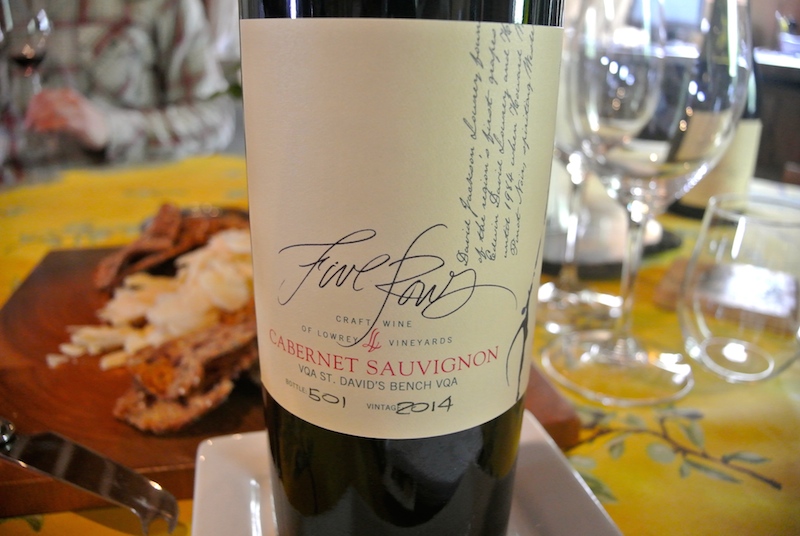
Five Rows Craft Wine Cabernet Sauvignon 2014 ($55, 89 points) — “I was worried about the vintage but was pleased with the ripeness,” says Lowrey of the vintage. The wine spends two years in French oak, 20% of which is new oak. The nose shows cassis, wild berries, bramble, earth and spice. There are some red fruits on the palate, but dark fruits dominate with polished tannins, spice and energy through the finish. Can cellar 2-4 years.





Comment here